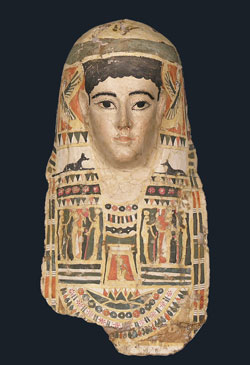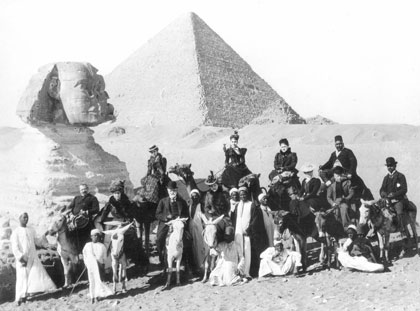Conservators' Art: Preserving Egypt's Past
Conservators' Art: Preserving Egypt's Past
Rare artifacts from the vast Egyptian collection of the Phoebe Hearst Museum of Anthropology are on display in a new campus exhibit. The exhibition provides a unique perspective on how museums blend technology and the humanities to conserve and understand ancient objects. The highlights of the exhibit include crocodile mummies that recently underwent CT scans at Stanford Medical School as well as statuary, mummy portraits, amulets, and one of only 30 known "reserve heads" used in Egyptian burial practices. The Egyptian artifacts represent some of the most important holdings in the Hearst's collection that totals 3.8 million objects.

Supported in part by the American Research Center in Egypt (ARCE), the exhibition is a memorial to Egyptologist and Berkeley Professor Cathleen "Candy" Keller, who passed away last year and was originally lead curator for the show. Carol Redmount, Associate Professor and Curator of Egyptian Archaeology, says "I was thrilled to pick up Candy's mantel to highlight the conservator's contribution to cultural heritage preservation using the lens of the Hearst's Egyptian collection."
The Egyptian collection was formed when Phoebe Hearst met archaeologist George A. Reisner on her first trip to Egypt in early 1899. Between 1899 and 1905, he collected approximately 17,000 objects, ranging from the Predynastic to Coptic times (over 4,000 years). Almost all of his finds were impeccably documented in notes, maps, plans, and photographs, some of which will appear in the exhibition.
In addition to Reisner, Mrs. Hearst also commissioned British archaeologists Bernard P. Grenfell and Arthur S. Hunt to collect at the Greek and Roman site of Tebtunis during the1899-1900 season. Many of the artifacts featured in the exhibition are from these excavations.
"We hope that this exhibition will demystify the work of archaeologists and conservators and facilitate a dialogue between the public and these professionals about what they do and how they do it," says Redmount.

Conservators at the Museum have been very involved in the exhibition and will share their knowledge by working on smaller objects in the gallery at various times during the exhibition run. A blog details their conservation interventions.
The opening reception is Thursday, April 29th from 6:00 to 9:00 p.m. The event is free but space is limited. To RSVP please visit the Hearst Museum website. The exhibit will run until spring 2011. General admission to the museum is free of charge. Docent-led tours can be scheduled for a nominal fee.